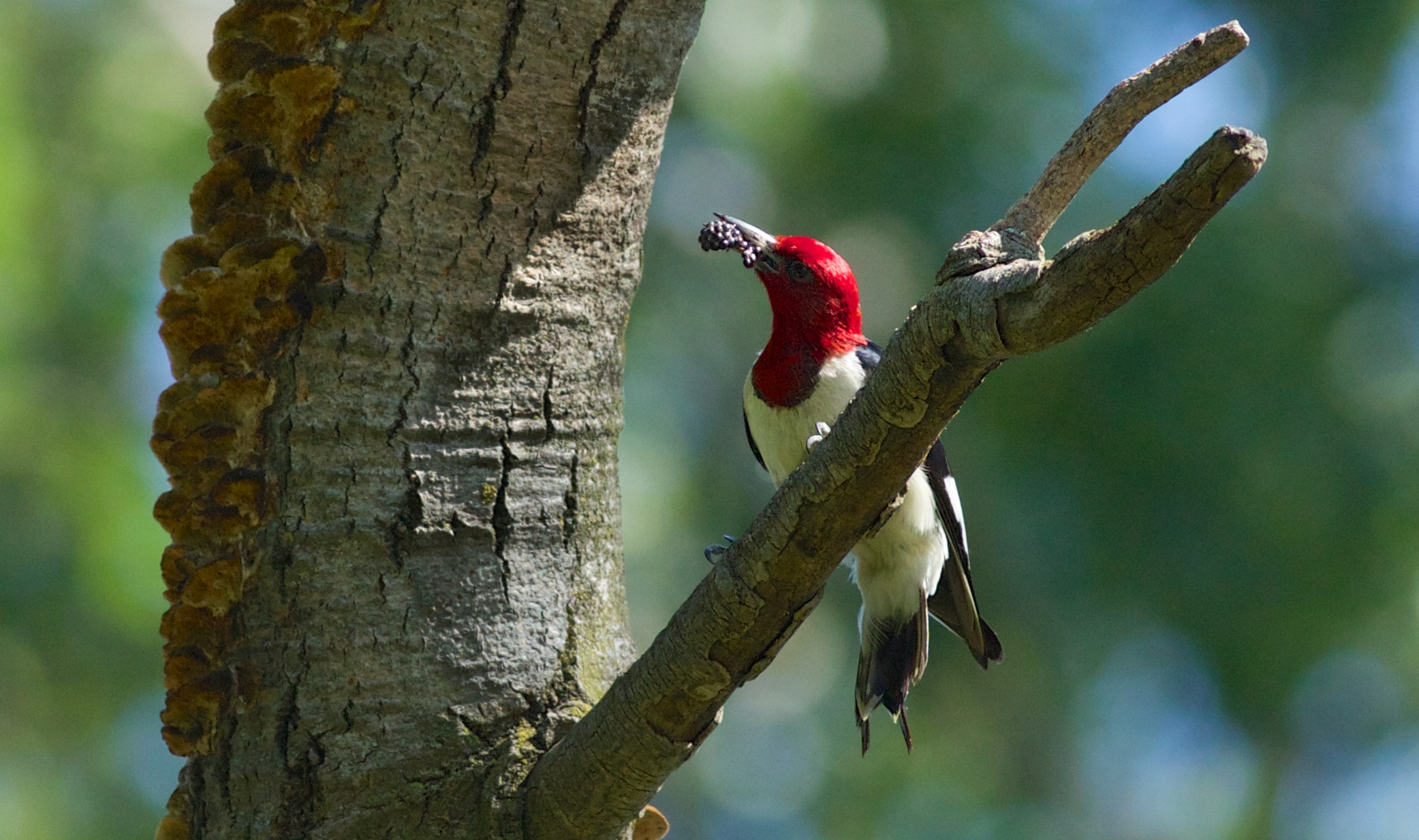A red-headed woodpecker in flight. Photo by Arlene Koziol
Boisterous in the spring and summer, gliding from dead snag to dead snag, the winter red-headed woodpecker instead rests on a snag, content to take in the snowy scene on a January afternoon. On approach, I hear the chatter of two red-headed woodpeckers, but unlike their lurid and sweeping flights of summer, the bird on this day—like I do—sits on a branch and hardly moves.
Unusual, I think, to have overwintering red-headed woodpeckers. I wonder if a feeder nearby has provided the extra resources for winter, but upon researching the overwintering habits of the bird, I find that its characteristic habitat, the oak savanna, will provide the resources for winter. Acorns, cached for winter, will provide high energy food over the course of these dark winter months. Where there are bumper crops of acorns, you’ll often find overwintering red-headed woodpeckers.
Located in a wet draw of silver maples between two oak woodland and savanna areas, these red-headed woodpeckers likely have a buffet of acorns to feed on. I wonder if other woodpeckers, of which I noticed red-bellied, downy, hairy, and a northern flicker, might steal the acorns. Yet, the red-headed woodpeckers are likely up for the task of defending their caches; during the breeding season, red-headed woodpeckers are known to fiercely defend their nest and territory, with reports of the birds raiding northern flicker and eastern kingbird nests after fights with the parents. In hindsight, I should have checked the abundant cavities in the decaying silver maples to see if there were any cached acorns.
Hope Lake Bog, where these woodpeckers are located, is actively being restored to oak savanna and woodland. The fact that these woodpeckers are overwintering here and are doing so in all likelihood because of a large acorn crop, has interesting implications for management of the site.
Since clearing buckthorn from large portions of the site, the open understory impresses under giant white oak trees. One of the few things missing here is a prescribed fire to stimulate understory herbs and clear out areas of brambles. Yet, a prescribed fire will also decrease the germination of acorns, with the intensity of the burn in turn decreasing the rate of germination in acorns. With the apparent bumper crop of acorns, the question lingers whether we should wait a year to implement a prescribed burn at the site. Another missing element of the site is young oak saplings to replace the giants in the canopy.
Prescribed burns in Hope Lake Bog result in patchy areas of unburned ground, perfect for germinating acorns. Photo by Drew Harry
While concerns over acorn germination are legitimate, the dynamics of fire in the oak ecosystem reveal an even more complex situation. In the picture below, you’ll see that after a fire through an oak leaf litter, there are considerable patches of unburned areas. These refuges may provide enough refuge to promote germination of acorns. As you can see, a simple natural history observation (hmm it’s odd that these red-headed woodpeckers are overwintering) can have cascading effects and implications for the restoration and management of the whole system. And we’re delighted to have these brilliant members of the ecosystem to alert us of changes on the ground that we might have missed.
Written by Drew Harry, Faville Grove Sanctuary land steward












